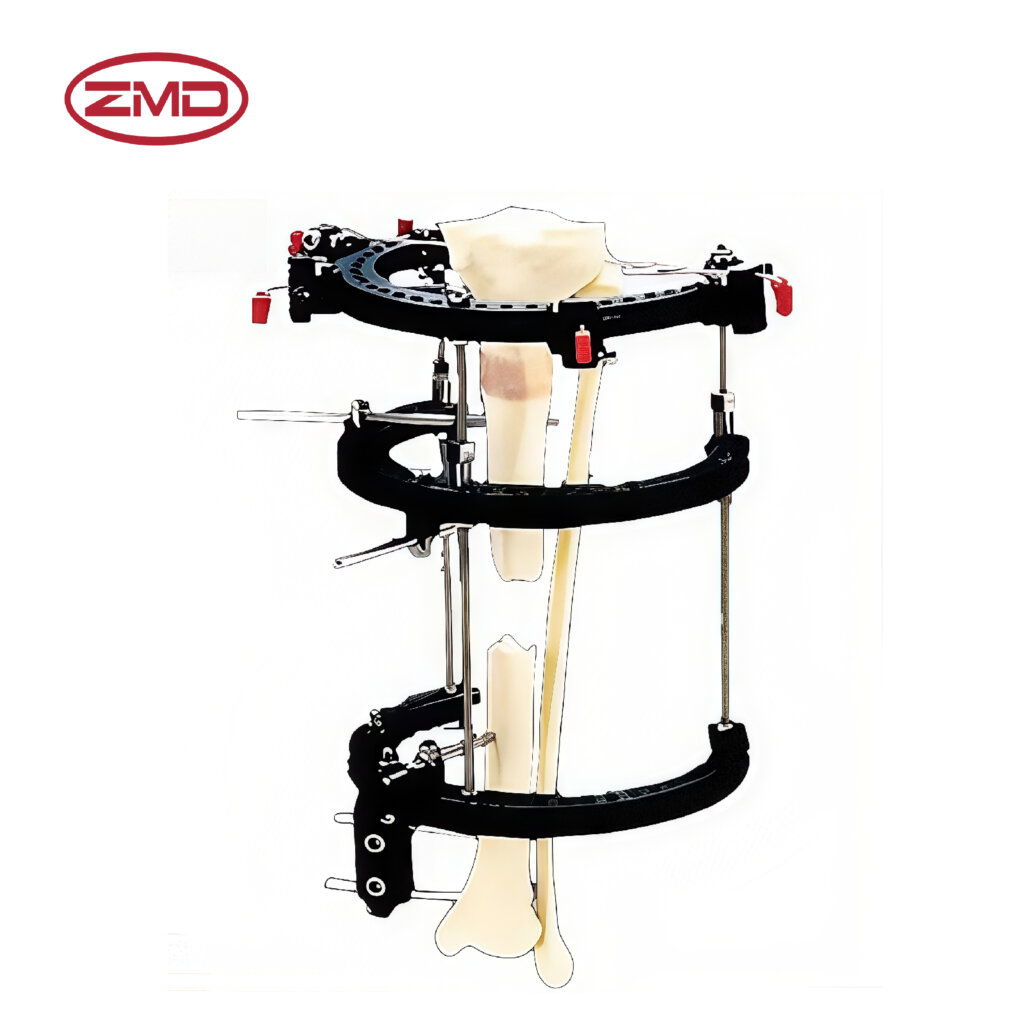
- Home
- About Us
- Products
- Trauma Internal Fixation System
- Spinal Internal Fixation System
- External Fixation
- Artificial Implants System
- Sports Medicine
- Power tools
- VSD System
- Instruments
- Medical supplies
- Blog
- Personnel Profile
- Contact Us
Phone line
| CODE | PRODUCTION | DESCRIPTION | MATERIAL |
| ZG101 | Ball-Jointed Module for Independent Screw Placement | / | Aluminum |
A: A Ball - Jointed Module for Independent Screw Placement is a specialized surgical tool created specifically to boost the precision and flexibility when placing screws during orthopedic procedures. It's designed to help surgeons position screws more accurately to achieve better results in treating bone-related conditions
A: The ball - jointed mechanism enables each screw to move and be positioned independently. It works like a ball-and-socket joint, allowing surgeons to adjust the angle, direction, and position of every screw precisely. This way, they can have more control and accuracy during the surgical process to place the screws exactly where they're needed.
A: The main benefits include improved precision in screw placement, which is crucial for proper bone fixation. It also reduces tissue trauma as screws can be positioned without excessive disruption to surrounding tissues. Additionally, it enhances surgical efficiency by making the screw placement process smoother and quicker. Moreover, it's versatile and can be used in multiple orthopedic procedures like fracture fixation, joint replacement, and spinal surgery
A: This module is frequently used in surgeries such as fracture fixation, where it helps secure broken bone fragments effectively. It's also used in joint replacement surgeries to firmly attach prosthetic components to the bone. In spinal surgery, it plays a role in stabilizing the vertebrae. Overall, it's valuable in any procedure that requires accurate screw placement for bone support and fixation.
A: Compared to traditional methods, the ball - jointed module provides greater precision, flexibility, and control. Traditional approaches can sometimes be more difficult as they might lack the ability to adjust screws precisely in different directions. They can also be more time-consuming because of the need for multiple adjustments to get the screws in the right position.
A: Yes, the module is designed to work with a variety of screw sizes and types. This flexibility allows surgeons to choose the most appropriate screws for different surgical situations, depending on factors like bone size, the nature of the injury, and the specific requirements of the procedure
A: The module is made to be compatible with standard surgical instruments. This ensures that it can fit smoothly into existing surgical workflows without the need for additional specialized equipment. Surgeons can use it alongside the tools they're already accustomed to using in the operating room
A: Just like with any surgical procedure, there are potential risks. However, the ball - jointed module is designed in a way that aims to minimize tissue trauma and improve the accuracy of screw placement. This helps reduce the likelihood of complications such as improper screw positioning, damage to surrounding tissues, or issues related to bone healing. But risks like infection or adverse reactions can still be present depending on various factors during and after the surgery
A: By enhancing precision in screw placement, the module helps ensure that the bone is properly fixed, which promotes better healing. Reducing tissue trauma means less pain, swelling, and a lower risk of post-operative complications for the patient. These factors combined lead to faster healing, reduced discomfort, and improved overall patient outcomes like a quicker return to normal activities
A: You can usually buy this product through medical equipment suppliers, orthopedic surgical instrument distributors, or online retailers that specialize in medical supplies. It's important to make sure the source is reliable and compliant with relevant medical regulations when making a purchase
Oh yeah! I have to mention their payment options and discount offers, which are awesome! Those payment methods are as flexible as moving water and can be chosen freely according to our cash flow situation. And the frequent discounts, like a timely rain, have been moisturizing our financial statements time and again, and have had a rocket-like positive impact on our profits! With ZMD, I feel relaxed and at ease when it comes to purchasing!
Send us a message if you have any questions or request a quote. Our experts will give you a reply within 24 hours and help you select the right valve you want.
Book Now
If you are looking for professional orthopedic medical product solutions, don’t hesitate to contact us now!

We are an integrated manufacturer specializing in orthopedic medical industry, providing high quality and reliable orthopedic medical products to customers worldwide.
Copyright © 2024 ASK Project